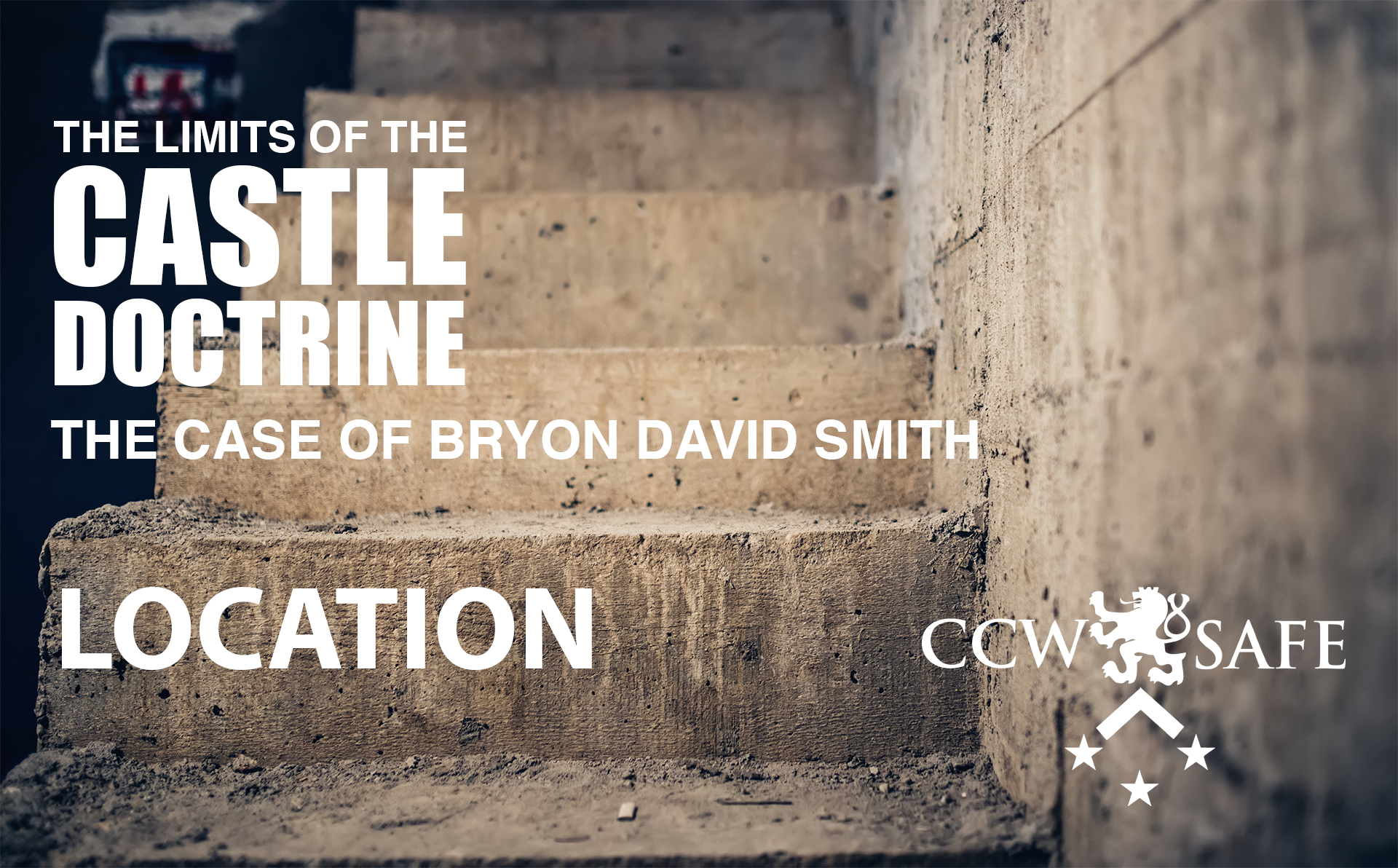
Posted on February 22, 2018
Byron David Smith and the Limits of the Castle Doctrine
Part 2: How Location Factored into the Defense of David Byron Smith
Lessons on Justified Self-Defense from the Byron David Smith Case
Next in our series, “The Four Elements of Self-Defense”, we’re exploring how location, escalation, reasonable fear and post-incident accidents affect legal defenses in the wake of a self-defense shooting. In our last installment, we reviewed the central facts of the Byron David Smith case, in which Byron David Smith fatally shot Haile Kifer and Nick Brady after the teens had broken into his home.
Now we’ll examine how location factored into Smith’s legal defense.
The day after Smith shot and killed the two teenagers who broke into his Little Falls, Minnesota home, he admitted to police that he shot the intruders more times than was required to save his life. This act – for a conceal carry permit holder – goes way beyond the scope of the Castle Doctrine. It’s the excessive number of shots that eventually led the jury to find Byron David Smith guilty of murder.
Less than a month before the Byron Smith murders, Smith had reported a break-in to police. He claimed that burglars had fled with thousands of dollars worth of gold coins and various sentimental items, including medals he’d earned as an airman in Vietnam. Smith also claimed several other break-ins the year before, none of which had been reported to police.
These break-ins made him feel extremely anxious, according to Smith. He began carrying a holstered pistol with him at all times – even when simply doing household chores.
He was preparing for the day when he would have to defend his life and his own home. That moment arrived in 2012, on Thanksgiving Day. Smith saw two teens, later identified as Nick Brady and Haile Kifer, casing his property and peeking into windows. Instead of calling the police, Smith decided to take matters into his own hands. He went to his basement and waited. When Brady b roke in through a window in and descended the steps to the basement, Smith shot and killed him. Kiefer followed Brady ten minutes later. Smith then shot and killed her too.
The Morrison County Sheriff’s Department investigated the shooting incident and arrested Smith for second-degree murder. As more evidence came to light, a grand jury pushed for first-degree murder. The decision to arrest Smith garnered national attention. Outraged gun-rights advocates felt the prosecution violated the Minnesota Castle Doctrine, and the rights of concealed carry permit holders to defend their homes.
The Castle Doctrine tells us that, when at home, we have no obligation to retreat if and when we are faced with the threat of imminent death or bodily harm. In other words, we can defend ourselves with force – and use deadly force, when necessary.
While most experts, and the general public, would agree that forced-entry intruders present an imminent threat, there are limits to how much force is considered reasonable to apply when defending your property. In the case of Byron David Smith, the Castle Doctrine protects homeowners forced to fire a weapon in self-defense. It does not, however, protect people who execute burglars in their basement, which is unjustified. Minnesota self-defense laws also exclude using excessive force once a threat has been neutralized.
“This isn’t a case about whether you have the right to protect yourself in your home. You clearly do. That’s a given,” the Morrison County Sheriff told the Minneapolis Star Tribune. “Rather,” the Sheriff continued, “this is a case about where the limits are.” During the trial, prosecutors would then go on to demonstrate that Smith went beyond his right of stopping the threat, executing the would-be robbers in his basement.
To provide some clarity as to how Smith exceeded the limits of the Castle Doctrine, let’s look at testimony given by pathologist Dr. Kelly Mills. Dr. Mills explained how Brady was shot three times – once in the shoulder, once in the abdomen, with the final shot penetrating Brady’s palm before entering the side of his skull.
As for Kifer, Smith shot her six times. But it was the final shot, placed directly under her chin, that caused the most concern.
In a self-defense shooting, every shot fired is important. For a shooting to be justified, the first and last shot must all be considered reasonable compared to the level of life-endangering threat the shooter experiences.
The first shots Smith fired, as the intruders crept into his basement, may have been justified. But once the teens had been shot, tumbled down the stairs, and we re splayed out on the floor, the immediate threat to Smith had vanished. At that point, Smith was still acting in self-defense and in alignment with the Castle Doctrine.
However, the final shots (Brady’s head, Kifer’s chin) were excessive and unnecessary. They were overkill. In court, prosecutors described these shots as executions. With this evidence many began referring to the case as the Byron Smith murders.
The lesson for the gun owners with concealed carry permits – or who keep guns in their homes – is that there are limits to the Castle Doctrine. Smith’s case is an extreme example of these limits. While it might be justifiable to fire at an intruder who forcibly enters your home, it’s not justifiable to shoot someone in the head who’s wounded on the floor, begging for his or her life.
In any self-defense scenario, force is only acceptable when faced with an imminent threat that needs to be eliminated. Once the threat is neutralized, the use of force is no longer justified.
In the next installment of our series, we’ll examine how Smith’s actions escalated the confrontation, and how these actions factored into his prosecution.